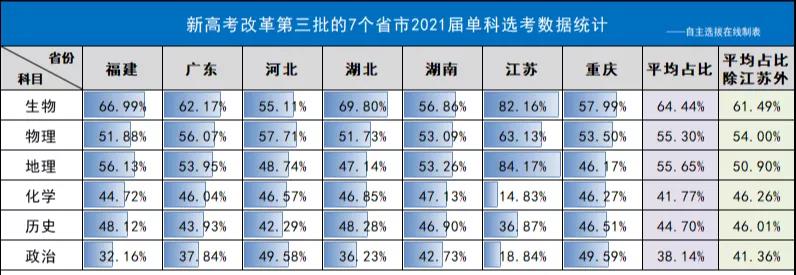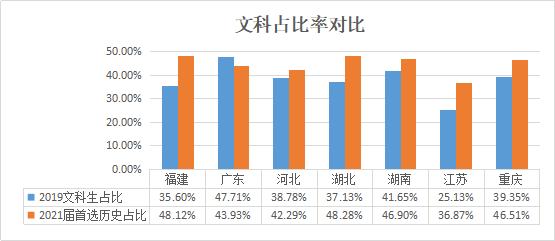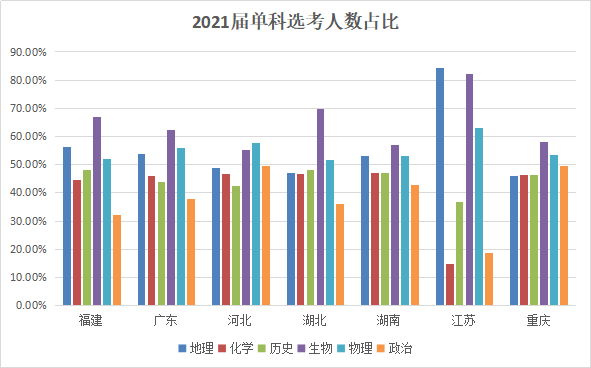导读:2018年6月六级第一套题的整体难度与往年持平,翻译、写作的题材较生活化,难度偏低。其中,长篇阅读的考查目的是测试学生摘要式阅读能力,即快速筛选信息、定位相似语句。此部分是同学们拿分的关键,每道题约7.1分,其特点在于有的段落不出题、有的段落出两道题、题文乱序。结合以上三个出题特点不难发现,该题就是考查同学能够在规定时间内浏览跳读找到10道题对应的出处。
2018年6月六级快速阅读解析-第一套
Section B
Directions: In this section, you are going to read a passage with ten
statements attached to it. Each statement contains information given in one of
the paragraphs. Identify the paragraph from which the information is derived.
You may choose a paragraph more than once. Each paragraph is marked with a
letter. Answer the question by marking the corresponding letter on Answer Sheet
2.
Peer Pressure Has a Positive Side
A. Parents of teenagers often view their children's friends with something
like suspicion. They worry that the adolescent peer group has the power to push
its members into behavior that is foolish and even dangerous. Such wariness is
well founded: statistics show, for example, that a teenage driver with a
same-age passenger in the car is at higher risk of a fatal crash than an
adolescent driving alone or with an adult.
B. In a 2005 study, psychologist Laurence Steinberg of Temple University
and his co-author, psychologist Margo Gardner, then at Temple, divided 306
people into three age groups: young adolescents, with a mean age of 14; older
adolescents, with a mean age of 19; and adults, aged 24 and older. Subjects
played a computerized driving game in which the player must avoid crashing into
a wall that materializes, without warning, on the roadway. Steinberg and Gardner
randomly assigned some participants to play alone or with two same-age peers
looking on.
C. Older adolescents scored about 50 percent higher on an index of risky
driving when their peers were in the room—and the driving of early adolescents
was fully twice as reckless when other young teens were around. In contrast,
adults behaved in similar ways regardless of whether they were on their own or
observed by others. “The presence of peers makes adolescents and youth, but not
adults, more likely to take risks,” Steinberg and Gardner concluded.
D. Yet in the years following the publication of this study, Steinberg
began to believe that this interpretation did not capture the whole picture. As
he and other researchers examined the question of why teens were more apt to
take risks in the company of other teenagers, they came to suspect that a
crowd's influence need not always be negative. Now some experts are proposing
that we should take advantage of the teen brain's keen sensitivity to the
presence of friends and leverage it to improve education.
E. In a 2011 study, Steinberg and his colleagues turned to functional MRI
(磁共振) to investigate how the presence of peers affects the activity in the
adolescent brain. They scanned the brains of 40 teens and adults who were
playing a virtual driving game designed to test whether players would brake at a
yellow light or speed on through the crossroad.
F. The brains of teenagers, but not adults, showed greater activity in two
regions associated with rewards when they were being observed by same-age peers
than when alone. In other words, rewards are more intense for teens when they
are with peers, which motivates them to pursue higher-risk experiences that
might bring a big payoff (such as the thrill of just making the light before it
turns red). But Steinberg suspected this tendency could also have its
advantages. In his latest experiment, published online in August, Steinberg and
his colleagues used a computerized version of a card game called the Iowa
Gambling Task to investigate how the presence of peers affects the way young
people gather and apply information.
G. The results: Teens who played the Iowa Gambling Task under the eyes of
fellow adolescents engaged in more exploratory behavior, learned faster from
both positive and negative outcomes, and achieved better performance on the task
than those who played in solitude. “What our study suggests is that teenagers
learn more quickly and more effectively when their peers are present than when
they're on their own,” Steinberg says. And this finding could have important
implications for how we think about educating adolescents.
H. Matthew D. Lieberman, a social cognitive neuroscientist at the
University of California, Los Angeles, and author of the 2013 book Social: Why
Our Brains Are Wired to Connect, suspects that the human brain is especially
adept at learning socially salient information. He points to a classic 2004
study in which psychologists at Dartmouth College and Harvard University used
functional MRI to track brain activity in 17 young men as they listened to
descriptions of people while concentrating on either socially relevant cues (for
example, trying to form an impression of a person based on the description) or
more socially neutral information (such as noting the order of details in the
description). The descriptions were the same in each condition, but people could
better remember these statements when given a social motivation.
I. The study also found that when subjects thought about and later recalled
descriptions in terms of their informational content, regions associated with
factual memory, such as the medial temporal lobe, became active. But thinking
about or remembering descriptions in terms of their social meaning activated the
dorsomedial prefrontal cortex—part of the brain's social network—even as
traditional memory regions registered low levels of activity. More recently, as
he reported in a 2012 review, Lieberman has discovered that this region may be
part of a distinct network involved in socially motivated learning and memory.
Such findings, he says, suggest that “this network can be called on to process
and store the kind of information taught in school—potentially giving students
access to a range of untapped mental powers.”
J. If humans are generally geared to recall details about one another, this
pattern is probably even more powerful among teenagers who are hyper attentive
to social minutiae: who is in, who is out, who likes whom, who is mad at whom.
Their penchant for social drama is not—or not only—a way of distracting
themselves from their schoolwork or of driving adults crazy. It is actually a
neurological(神经的) sensitivity, initiated by hormonal changes. Evolutionarily
speaking, people in this age group are at a stage in which they can prepare to
find a mate and start their own family while separating from parents and
striking out on their own. To do this successfully, their brain prompts them to
think and even obsess about others.
K. Yet our schools focus primarily on students as individual entities. What
would happen if educators instead took advantage of the fact that teens are
powerfully compelled to think in social terms? In Social, Lieberman lays out a
number of ways to do so. History and English could be presented through the lens
of the psychological drives of the people involved. One could therefore present
Napoleon in terms of his desire to impress or Churchill in terms of his lonely
melancholy. Less inherently interpersonal subjects, such as math, could acquire
a social aspect through team problem solving and peer tutoring. Research shows
that when we absorb information in order to teach it to someone else, we learn
it more accurately and deeply, perhaps in part because we are engaging our
social cognition.
L. And although anxious parents may not welcome the notion, educators could
turn adolescent recklessness to academic ends. “Risk taking in an educational
context is a vital skill that enables progress and creativity,” wrote
Sarah-Jayne Blakemore, a cognitive neuroscientist at University College London,
in a review published last year. Yet, she noted, many young people are
especially risk averse at school—afraid that one low test score or mediocre
grade could cost them a spot at a selective university. We should assure such
students that risk, and even peer pressure, can be a good thing—as long as it
happens in the classroom and not the car.
36. It is thought probable that the human brain is particularly good at
picking-up socially important information.
答案:H。 the human brain is especially adept at learning socially salient
information.的同义替换。
37. It can be concluded from experiment that the presence of peers
increases risk-taking by adolescents and youth.
答案: C。与The presence of peers makes adolescents and youth, but not adults,
more likely to take risks的信息完全一致。
38. Students should be told that risk-taking in classroom can be something
positive.
答案:L。此句是We should assure such students that risk, and even peer pressure,
can be a good thing—as long as it happens in the classroom and not the car.
的同义替换。
39. The urgency of finding a mate and getting married accounts for
adolescents’ greater attention to social interactions.
答案: J。通过mate和getting married等信息可定位到此句。Evolutionarily speaking, people in
this age group are at a stage in which they can prepare to find a mate and start
their own family while separating from parents and striking out on their
own.
40. According to Steinberg, the presence of peers increases the speed and
effectiveness of teenagers’ learning.
答案: G。根据Steinberg和“提升青少年学习效率”等信息可定位到此句 “What our study suggests is that
teenagers learn more quickly and more effectively when their peers are present
than when they're on their own” Steinberg says.
41. Teenagers’ parents are often concerned about negative peer
influence.
答案: A。根据parents和negative peer influence定位到首段Parents of teenagers often view
their children's friends with something like suspicion. They worry that the
adolescent peer group has the power to push its members into behavior that is
foolish and even dangerous.
42. Activating the brain’s network involved in socially motivated learning
and memory may allow students to tap their mental powers.
答案:I。根据network、tap、mental power等词可定位此句。this network can be called on to
process and store the kind of information taught in school—potentially giving
students access to a range of untapped mental powers.
43. The presence of peer intensifies the feeling of rewards in teens’
brains.
答案:F。通过rewards可定位至此句。In other words, rewards are more intense for teens
when they are with peers。
44. When we absorb information for the purpose of imparting it to ethers,
we do so with greater secretary and depth.
答案:K。 根据absorb information可定位至此句Research shows that when we absorb
information in order to teach it to someone else, we learn it more accurately
and deeply, perhaps in part because we are engaging our social cognition.
45. Some experts are suggesting that we turn peer influence to good use in
education.
答案:D。根据experts和education可定位至此句。Now some experts are proposing that we
should take advantage of the teen brain's keen sensitivity to the presence of
friends and leverage it to improve education.
延伸阅读
2018年6月大学英语六级听力讲座二原文及解析
2018年6月大学英语六级选词填空解析
2018年6月大学英语六级翻译解析
2018年6月大学英语六级写作解析
2018年6月大学英语六级仔细阅读解析





















 京公网安备11010802021790号
京公网安备11010802021790号









 学习资料
学习资料
